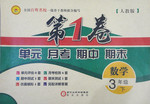题目内容
The surface of the table ________ smooth.
- A.isn't felt
- B.isn't feeling
- C.doesn't feel
- D.hasn't felt

 第1卷单元月考期中期末系列答案
第1卷单元月考期中期末系列答案Curiosity is an important characteristic of a genius. You can’t find an intellectual giant who is not a curious person.
【小题1】 This is necessary if you are to have a curious mind. Some things you know and believe might be wrong, and you should be prepared to accept things you don’t know or you don’t quite agree on.
【小题2】 If you just accept the world as it is, you will certainly lose your “curiosity”. Try to discover what is beneath(在…下面) the surfaces of things around you.
Ask questions from time to time. A sure way to discover what is beneath the surface is by asking questions: What is that? Why does it make that way? How does it work? And so on. 【小题3】
See learning as something that is fun. If you see learning as a burden, it will just make the burden heavier. But if you can find learning interesting, it will open another door. 【小题4】
Read different kinds of reading materials. Don’t spend too much time on just one subject. 【小题5】 It will introduce you to other possibilities that may interest you.
| A.Search for ideas to write about. |
| B.So make an effort to enjoy the learning process. |
| C.Discuss your ideas with other people. |
| D.Feed your mind with interesting facts about different subjects. |
F. It is the simplest way for curious people to increase their knowledge.
G. Try to look into the things.
 times
times